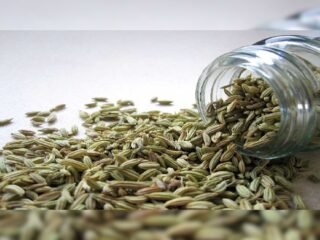Scientists from Imperial College London report on the development of a new type of rapid urine test that measures the health of a person’s diet, and produces an individual’s unique urine “fingerprint.”
The researchers, working in collaboration with colleagues at Northwestern University, University of Illinois, and Murdoch University, analyzed levels of different metabolites in the urine of more than 1,500 people in the United States.
Their results, published in Nature Food (“Nutriome-metabolome relationships provide insights into dietary intake and metabolism”), uncovered a link between dozens of metabolites in urine, and types of food or nutrients in the diet.
Metabolites produced as different foods are digested are considered to be an objective indicator of diet quality.
In a second paper, also published in Nature Food (“Dietary metabotype modeling predicts individual responses to dietary interventions”), the Imperial researchers, in collaboration with colleagues at Newcastle University, Aberystwyth University, and Murdoch University, used the technology to develop a five-minute urine test.
Their results of initial testing showed that the mix of metabolites in urine varies from person to person, even when they eat the same diet.
The team said the technology could help health professionals to tailor healthy eating advice —“precision nutrition”—to people, based on the quality of their diet and individual biological make-up.
Joram Posma, PhD, lecturer in cancer informatics, at Imperial’s department of metabolism, digestion and reproduction, is first author of the “Nutriome-metabolome relationships provide insights into dietary intake and metabolism” paper.
He said, “Diet is a key contributor to human health and disease, though it is notoriously difficult to measure accurately because it relies on an individual’s ability to recall what and how much they ate. For instance, asking people to track their diets through apps or diaries can often lead to inaccurate reports about what they really eat. This research reveals this technology can help provide in-depth information on the quality of a person’s diet, and whether it is the right type of diet for their individual biological make-up.”
YOU MAY LIKE TO READ: Include These Foods In Your Diet For Better Health
Although poor diet is a major contributor to chronic disease, it is extremely challenging to obtain accurate data on dietary patterns and intake, the authors wrote.
“Traditional methods rely on self-reports, which are prone to misreporting and bias, potentially resulting in erroneous associations between diet and disease risk.” New approaches are needed to help understand the metabolic consequences of dietary intakes, eating patterns, and their relation to disease risk.
The Imperial College London researchers, together with their collaborators, used 1H NMR spectroscopy to analyze levels of metabolites in the urine of 1,848 people in the International Population study on Macronutrients and Blood Pressure (INTERMAP) cohort. Their results revealed an association between 46 metabolites in urine, and different types of foods or nutrients in the diet. “… we measured a diverse set of urinary metabolites (the functional nutriome) with implications for understanding pathways leading from dietary intakes to disease,” the team commented.
For instance, certain metabolites correlated with alcohol intake, while others were linked to intake of citrus fruit, fructose (fruit sugar), glucose, and vitamin C.
The investigators also found metabolites in urine that were associated with dietary intake of red meats, other meats such as chicken, and nutrients such as calcium.
In addition, the results indicated that certain metabolites were linked with health conditions.
For example, compounds such as formate and sodium (an indicator of salt intake) found in urine are linked with obesity and high blood pressure.
The team said that in contrast with other approaches for dietary analysis, their urinary spectroscopic characterization objectively captured the end products of metabolism so as to overcome the problems of reporting bias in dietary records.







